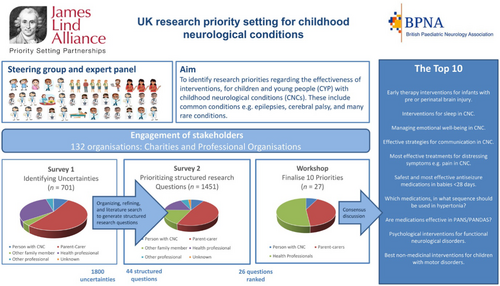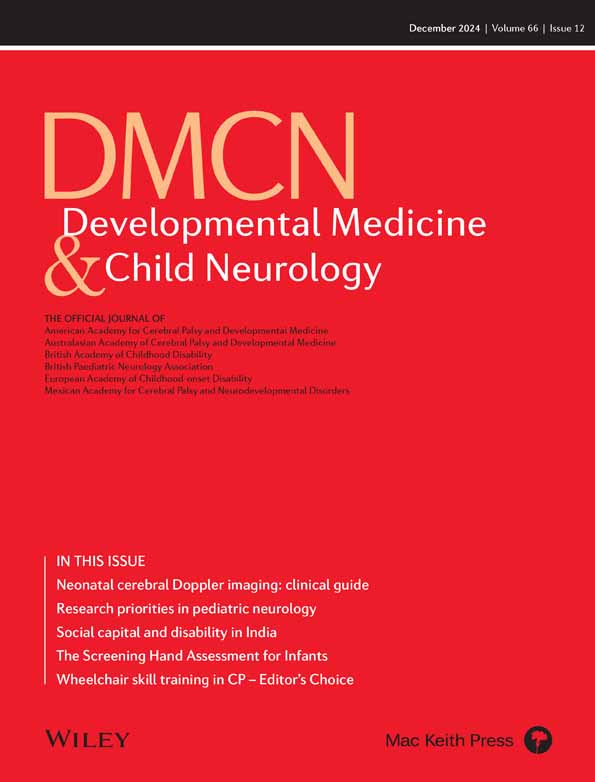UK research priority setting for childhood neurological conditions
In this project, we wanted to find the most important unanswered questions about treatments, or therapies for children and young people with childhood neurological conditions such as epilepsies, cerebral palsy, and many rare conditions. This is called a Priority Setting Partnership.
Priority Setting Partnerships aim to help patients, carers, and health professionals work together to agree research priorities. There is a structured way to do this. It includes two surveys, the first to ask people questions that they may have about childhood neurological conditions. Then, after a team of professionals have reviewed the questions, and checked if they are answered, another survey asks people to choose their 10 highest priority questions. After many people have ranked the questions, the highest-ranking questions are discussed in a workshop to choose the top 10.
People were invited to do the surveys via charities, clinical services, and social media. In total 701 people completed survey one and they had 1800 questions. After removing repeats, grouping them, then checking medical evidence, there were 44 research priorities. In survey two, 1451 people selected their top 10 questions. Over three-quarters of both survey responders were parent-carers or young people with childhood neurological conditions. When everyone's priorities were combined the top 26 were chosen. They were discussed at a workshop with 14 healthcare professionals, 11 parent-carers, and 2 young people; and the top 10 priorities were agreed.
The 10 priority questions include: therapies, medications and treatments for rare and common childhood neurological conditions, and supporting the challenges that young people with many different childhood neurological conditions may have e.g. sleep difficulties, supporting emotional wellbeing, and managing symptoms like pain.





